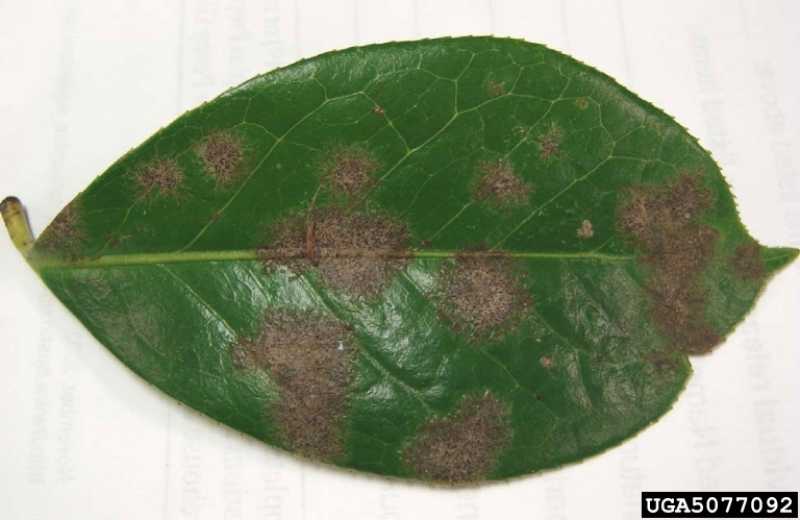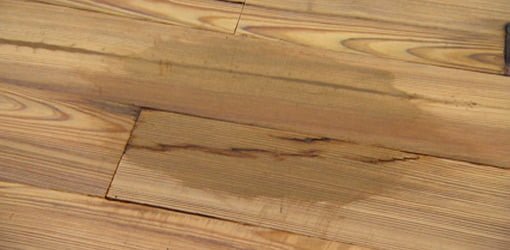The jellylike blobs of green are colonies of Nostoc, a phylum of bacteria that get their energy through photosynthesis. This specimen was found growing in a lawn. How to Fix Dead Patches in the Lawn Patchy dead spots can come from all sorts of directions, including fungal diseases such as brown patch and rust, animal digging, grub damage, dog urine and plain, old heat and drought. A healthy lawn is always less likely to be affected by pests and diseases but from time to time, problems will occur that will show up as brown patches. Black spots on grass not only look unattractive and serve as an eyesore, they sabotage the health and vigor of the lawn and weaken its structure. Mostly caused by fungal infestations, such spots or patches signal serious health problems that require immediate attention to control spread and help the grass regain its natural color. Troubleshoot Lawn Damage and Diseases. Wellestablished turfgrasses are quite resilient. But even the bestkept lawn can be vulnerable. Learn to recognize, prevent and treat lawn damage and diseases. Patches of whitegrayblack deposits appear on leaves. Slime mold may appear powdery in early stages but forms tiny balls as the infections. Spots on lawns can be an indication of many possible problems including lawn disease. These spots are often characterised by brown patches or circles on the lawn which will range in size from the size of a dollar coin an up to a metre or more in diameter. Bare patches in an otherwise full, healthy lawn may be the result of pet urine, heavy foot traffic, infestations by grubs or other pests, or a variety of other causes. Best Answer: The black fungus is called smut. And the mushrooms are also a form of fungus. if you are getting a lot of rain now it will cause the fungus to germinate and spread. No damage to the lawn just unsightly. The mold patches start out a light grey or white, but as spores grow on the grass blades they turn from gray to black. Unlike greasy spot, however, grass coated in slime mold only looks like it is. Once youve killed and removed the moss you will be left with bare patches of lawn. Its essential that you grow new healthy grass over these patches to avoid them being overgrown by moss again. Read our guide on how to repair your lawn. Brown patch is a fungal disease affecting the roots of lawn grasses. Symptoms begin with small areas of discoloured grass and spread to brown off and kill areas up to 1 metre. Examination of grass roots will show roots turning black. Though regular fertilizing is an important part of keeping lawns healthy and green, an overdose can lead to patches of black, burned grass. Preventing fertilizer burn is easy, and using all. I put fertilizer on my lawn, and a few days later I had patches of dead grass! Will I have to replant, or will the grass come back? Roger Over fertilizing is one of the quickest ways to kill your lawn. From general discoloration to those telltale stripes from overlapping spreader rows, excessive. Lawn diseases such as snow mold can kill patches of lawn. Fine white webbing covering the lawn, gradually killing the grass, is a common sign of a fungal disease. Fine white webbing covering the lawn, gradually killing the grass, is a common sign of a fungal disease. How do I fix dead white patches in my lawn? Can I ask you to find a largeish sheet of plastic, preferably black plastic, water an area of lawn, then lay the plastic over the top and anchor it down, just to stop it blowing away lift it the following morning as early as you can manage to see if any more have come to the surface. Black spots started to appear about 6 years ago in one corner of lawn. Now they have spread all over the lawn. It cured it for a while, but it came back again. March 2012 I sprayed bluestone on moss patches, scarified the lawn a few weeks later in dry weather. The blackness is not dead moss. This Old House landscape contractor Roger Cook resuscitates a dying lawn. (See below for a shopping list and tools. ) Click here to SUBSCRIBE to the official. Lawn Scalping is often a cause for dead patches in the lawn, it occurs when too much leaf material was removed during mowing, usually due to infrequent lawn mowing which raises the crowns of the lawn, and once the crowns are damaged or removed, the affected lawn area may die off. A patchy network of drying brown grass can be resolved by spiking, hollow tine aeration and wetting agents to bring the lawn back to life. At last, a simple and much safer solution for controlling black lawn beetles. During summer and early autumn, far too many Adelaide lawns are regularly bombarded with chlorpyrifos (an extremely toxic and environmentally damaging chemical) in an often futile attempt to control black lawn beetles and their witchetty grublike larvae. I feel that what you need to do with regard to the black patches in your lawn John is that if the areas are reasonably dry if would gently fork them over level the soil out and reseed. So, I screwed up, and put too much turf fertilizer on my lawn. It's not completely browndead, but there are some pretty significant patches. Is there any way to recover from this. A Visual Guide to Lawn Problems: Zoysia Grass black bugs. If chinch bugs are present, there is no recourse but the use of a curative insecticide to eliminate the problem. Because occurrence is sporadic from year to year, are gradual thinning and weakening of the lawn followed by small patches Bare patches can appear in your lawn after a thorough raking, where the grass is undernourished or where its been worn out. These gaps should be reseeded or returfed to prevent moss and weeds colonising the soil and to allow your lawn to look its best all year round. It is true that Black Lawn Beetle can cause severe damage in a lawn, but in real truth this is an extremely rare occurrence, and in practice when lawn owners do blame Black Beetle for lawn damage it is in fact not the cause in well over 99 of cases. The black substance on lawns is a primitive organism that is actually beneficial. It creeps along leaf blades eating dead organic matter, bacteria and even other molds. The only drawback to the spores is the aesthetics of it on your lawn. If the sight of the colorful patches offends you, simply rake it up off the blades of grass. Powdery mildew disease in lawns is usually the result of trying to grow grass in a poor location. If you see white powder on your lawn, then the following article will help with treatment. Algae and moss in lawns Identification. Is your lawn 'marshy Do you see a dark greenblack slimy layer in your lawn? Do you see short green fuzzy plants in your lawn? If you answer yes to the above questions, you have moss or algae growing in your lawn. Watch videoThe only time to bag clippings is when your lawn is having a disease breakout, often signaled by irregular brown patches or rings in the lawn. The weed feed will have killed off the moss and turned it black. You can rake the dead moss out and if there are bare bits, then you may need to reseed those bits. When black mold appears seemly out of nowhere, leaving patches of black slime on the lawn, grabbing the nearest fungicide is tempting. But for this problem, chemicals rarely work. Though unsightly, black mold is relatively benign and not difficult to treat. 8 Things Your Lawn Is Trying to Tell You Nothing adds more curb appeal to your home than a beautiful, lush, wellmanicured lawn. But sometimes droughts, fungi, insects, or other problems can wreak. Lawn, Trees Foliage; Spotting and Removing Black Mold in Soil. One thing you hope you never see in your garden soil or flower beds is black mold. The mold creates black patches on the soil which are easily recognized, and can pose serious health threats. If it is not treated and removed, it will spread quickly. Brown patch lawn disease is one of the most destructive of all turf lawn diseases. It sneaks up on you and destroys large areas of turf virtually overnight when the weather conditions are just right. Lawn diseases can turn your piece of nature into an unsightly area. com, most lawn diseases come from fungi that live off grass. What looks like black mold in grass is usually a species called slime mold. My lawn recently (late October) developed patches of grass with black blades. The entire blade is black; it doesn't rub off nor is there a powdery residue. The lawn is Kentucky Bluegrass, regularly fertilized with Richlawn Turf Food, and normally mowed to a height of 3 3 12 inches. Just recently small black patches have appeared in my lawns. What is it and how do I get rid. Can you also suggest a top notch autumn fertiliser. Lawn fungal diseases take on a variety of forms from deadlooking brown patches to highly visible spots, threads, rings, or slimes. And once they strike your yard, grass fungal diseases can be. My lawn is horrendous, have weeds the size of triffids, burnt patches where I have tried to kill them, lots of moss and different types of grass that all grow at different speeds. I have just emailed the green thumb people to see what they can docharge. These spots have brown or strawcolored centers and prominent reddishblack to brown borders. Leaves, stems, crowns, and roots may be affected, often causing considerable thinning of the turf. These diseases first occur on the leaves during cool, wet weather. As above, but also products like this need as even coverage as you can manage and if you slip up there can be patches of grass that get a double dose compared to the rest of the lawn! hence certain parts looking different to others. keep an eye out for patches of grass that wilt or are bluegreen on hot days. If you count six to 10 grubs (white wormlike larvae with black heads) under a 1ft. square area of sod, consider using a grub insecticide (available at home centers and nurseries Black Spots in Grass. There are many factors responsible for lawn discoloration, but the few that cause blades to turn black and form a black spot or patch in the grass are usually due to fungal infestations. Different types of fungi ranging from green to black in color appear on grass weakened due to improper cultural practices including Question We live on top of a hill, 800ft elevation. Black patches are appearing on my lawn which appear to look like oil, but on close examination is some kind of fungal growth. T his year in particular, what I jokingly refer to as the lawn has been invaded by blobs of black jelly, about an inch or so in diameter, on the rare occasions that we. Some lawns have more moss than others, however the application is the same for all, a iron sulphate spray which attacks the moss, kills it and turns it a black colour, (hence the black patches in your lawn). Can be too much water or most likely tree roots are decaying just below the soil. I has a spot right out my front door, in Fescue grass that turned black every year until I discovered a long passed tree was decaying. 5 years old was applied as turf. Most of it is all right except the two patches as in pics. I think if its a disease it will spread and spoil the rest of the lawn..











